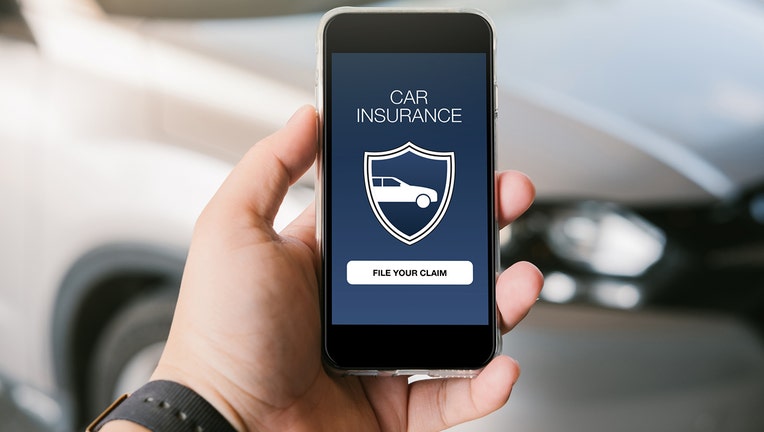Picking new car insurance? Here are 6 types of coverage policies

Your car insurance policy should be customized to your needs and budget. Learn more about popular types of car insurance, additional coverage you can purchase and tips for selecting the right policy for the best price. (iStock)
With so many policy options available, choosing the right type of car insurance for your vehicle can seem overwhelming. Depending on your driving habits, lifestyle needs and state-required minimums, it’s easy to accidentally select too much — or too little — auto coverage. These are among the most common car insurance options available:
- Collision coverage
- Comprehensive coverage
- Liability coverage
- Medical payments coverage
- Personal injury protection
- Uninsured and underinsured motorist coverage
It's important to compare several auto insurance companies, as well as their types of coverages, before signing up for a policy. Credible’s car insurance marketplace simplifies this process. Get started today.
6 MISTAKES TO AVOID WHEN COMPARING CAR INSURANCE QUOTES ONLINE
6 popular types of car insurance
Most car insurance companies will offer similar categories of basic coverage. These coverage options may range in scope but are typically designed to financially protect the policyholder against any injuries or damages that they or another driver may cause.
1. Collision coverage
Collision coverage offers protection in the event that you are involved in a collision. This includes colliding with another vehicle, as well as hitting a stationary object, such as a gate or pole. It only pays for the damage that your car sustains; it usually does not pay for whatever your vehicle hits. In many states, this type of auto coverage is only required for drivers who are leasing a vehicle.
2. Comprehensive coverage
Comprehensive car insurance is often optional coverage and provides protection against damages to your vehicle not caused by a collision. For instance, comprehensive coverage plans could reimburse you for damages caused by severe weather like hail or wildfires, theft or vandalism and even damages caused by animals or falling objects.
3. Liability coverage
While collision and comprehensive coverages pay for damages to your vehicle, liability coverage pays for damages to whatever or whomever you hit. For example, liability coverage will pay for repairing or replacing a fence that you hit with your vehicle. It will also pay for any injuries that the other driver sustains if you’re at fault for the car accident. This auto coverage is mandatory in most states.
4. Medical payments coverage
Although collision coverage will pay for damages to your vehicle, it will not cover any physical injuries you or your passengers sustain. Medical payments coverage could help pay for medical expenses — such as X-rays or operations — that you or your passengers incur as a result of a car accident.
5. Personal injury protection coverage
Personal injury protection (PIP) coverage shares some similarities with medical payments coverage. PIP coverage is only available in certain states and can help pay for medical expenses. PIP insurance can also potentially cover other expenses related to the accident, such as covering any income you lose while you are recovering from your injuries.
6. Uninsured and underinsured motorist coverage
Uninsured and underinsured motorist coverage policies are designed to protect you as the victim of a car accident. Uninsured motorist coverage may cover your medical expenses or car repairs if you’re hit by a driver who isn’t insured. Because each state has different required minimums, underinsured motorist coverage will help you cover the rest of the costs associated with the car accident if the driver at fault’s insurance cannot cover the total expenses.
Are you receiving the best auto insurance rate from your current provider? Comparing multiple quotes from other car insurance providers could potentially save you hundreds of dollars per year. Get a free auto insurance quote in minutes from Credible’s partners.
HOW AUTO INSURANCE PREMIUMS ARE CALCULATED
Other kinds of insurance
After choosing a general insurance policy like the ones listed above, you may consider adding additional auto coverage to your plan that caters to your lifestyle needs. Some other kinds of coverage options that you can add to your car insurance policy include:
- Gap insurance
- Ride-sharing insurance
- New car replacement coverage
- Rental car reimbursement coverage
- Roadside assistance and towing coverage
Car insurance prices can vary from agency to agency which is why it’s always wise to compare auto insurance companies and shop their plans through an online marketplace like Credible.
HOW TO GET A DISCOUNT ON CAR INSURANCE
How to pick the right car insurance
As you sort through your car insurance options, you should choose a policy that provides sufficient coverage for your lifestyle and financial needs. Below are some things you may want to consider:
- You should shop for cheaper car insurance every six months to ensure that you’re receiving the lowest rate possible
- Factors like your driving history, credit score and insurance claims can impact your car insurance rate, both positively and negatively
- If you purchase a different vehicle or change your driving habits, you may qualify for discounts or reduced car insurance
- New drivers should consider choosing a policy that will cover damages often incurred by inexperienced drivers, such as collision coverage
You can get the best car insurance policy and rate without leaving home. Explore pricing and find the right auto insurance plan for your unique needs on Credible.

